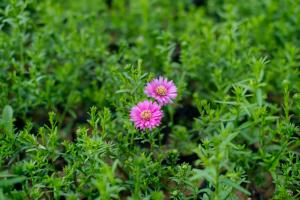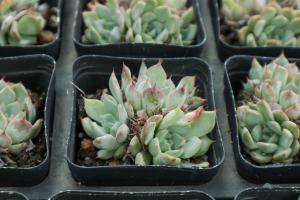Are Tomato Plant Stems Spiky or Smooth?
Tomato plants are one of the most popular vegetables grown in home gardens around the world. Whether you grow them in pots on your patio or in a larger garden bed, there is nothing quite like biting into a fresh, juicy tomato picked straight from the vine. While many tomato growers focus on the size and flavor of their fruits, others might wonder about the stems of the plant itself: are tomato plant stems spiky or smooth?
Structure of Tomato Plant Stems
Before we answer the question of whether or not tomato plant stems are spiky or smooth, let's first explore the structure of these plants. Tomato stems are considered to be herbaceous (meaning non-woody), and are usually covered in small, fine hairs that may give them a slightly prickly texture. These hairs, known as trichomes, serve a variety of purposes; they can help deter pests and prevent water loss, and also provide some support as the plant grows.
So, Are Tomato Plant Stems Spiky or Smooth?
While tomato plant stems may have a slightly prickly texture due to the presence of trichomes, they are not considered to be spiky. The trichomes on tomato stems are usually too small and fine to be noticeable, and most people would describe the texture of these stems as "smooth." This is especially true when compared to other types of plants, such as roses or cacti, that have much larger and sharper spines or thorns.
Why Does It Matter?
At this point, you might be wondering why it matters whether or not tomato plant stems are spiky or smooth. After all, most gardeners probably don't spend a lot of time touching the stems of their tomato plants. However, understanding the texture and structure of these plants can be important for several reasons.
First, knowledge of tomato plant structure and function can help gardeners make informed choices about how to care for their plants. For example, understanding the role of trichomes in water conservation might help someone decide when and how to water their tomato plants. It can also help gardeners identify potential pests or diseases that might affect their plants.
Additionally, knowing the structure of tomato plants can make them more interesting and satisfying to grow. Learning about the different parts of the plant, how they work together, and how they contribute to the overall growth and development can help gardeners develop a deeper appreciation for these amazing little vegetables.
In Conclusion
So, are tomato plant stems spiky or smooth? While they may have a slightly prickly texture due to the presence of trichomes, tomato stems are generally considered to be smooth. Understanding the structure of these plants can be important for gardeners who want to care for their plants effectively and develop a deeper appreciation for their growth and development.

 how many times do yo...
how many times do yo... how many planted tre...
how many planted tre... how many pine trees ...
how many pine trees ... how many pecan trees...
how many pecan trees... how many plants comp...
how many plants comp... how many plants can ...
how many plants can ... how many plants and ...
how many plants and ... how many pepper plan...
how many pepper plan...





























